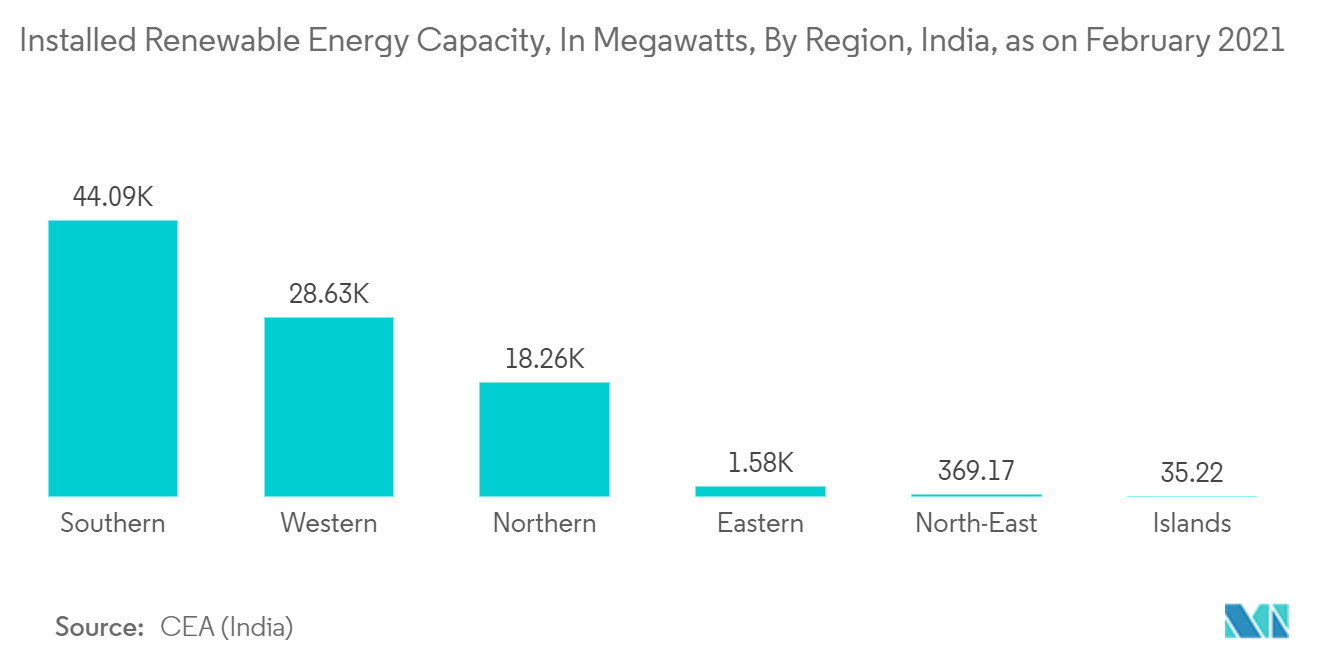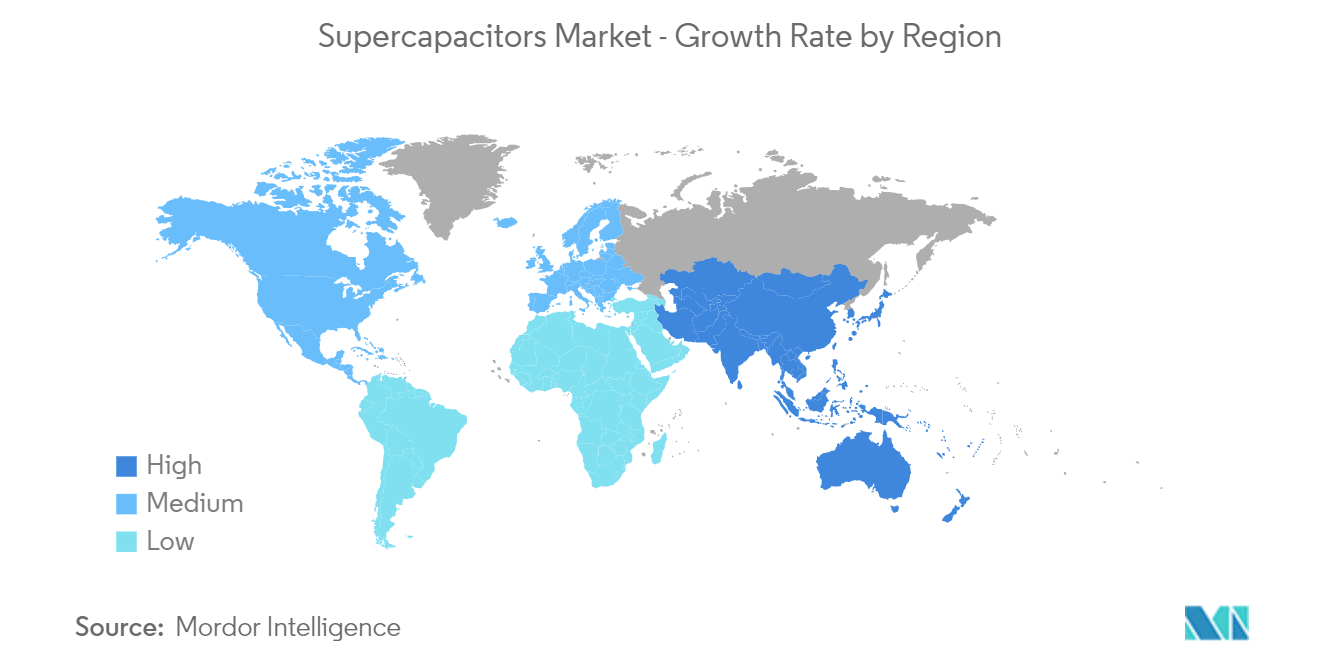Market Trends of Supercapacitors Industry
Increasing Demand for Renewable Energy Solutions is Expected to Drive the Market Growth
The Supercapacitors Market was valued at USD 549.1 million in the current year. It is expected to reach a value of USD 1,114.60 million by the next five years, registering a CAGR of 13.19% during the forecast period. Supercapacitors are replacing traditional electric car batteries with quick charging and temperature stability. Additionally, supercapacitors are more flexible than standard batteries. The high demand for a stable power supply for applications such as GPS, portable media players, laptops, and mobile devices, is an emerging trend in the market studied.
- Supercapacitor charging and discharging also helps sustain peak loads and backup power, which is significant for continuous operation. It includes battery-powered industrial applications such as smart meters, smoke detectors, video doorbells, and medical applications. To support this, various vendors are launching new products. For instance, Texas Instruments (TI) recently announced a new bidirectional buck/boost converter with a quiescent current (IQ) of 60 nA. Additionally, compared to frequently used hybrid-layer capacitors, the TPS61094 buck/boost converter includes a buck mode for supercapacitor charging while delivering ultra-low IQ, allowing engineers to extend battery life by up to 20%. (hybrid-layer capacitors (HLCs)).
- Further research is underway in developing affordable and innovative solutions built on existing supercapacitor technology. It offers a more affordable and ecological alternative to present models and emphasizes the need to reduce the carbon-based electrode production cost and the dependency on crucial components. For instance, researchers from Imperial College London and University College London (UCL) recently developed a more sustainable and energy-dense electrode material for supercapacitors, paving the way for further market use of high-power, quick-charging electric vehicle technology.
- In recent years, communication systems in telecom and space have propelled the supercapacitors demand. The Indian Space Research Organization (ISRO), at its Vikram Sarabhai Space Center (VSSC), developed the technology for processing supercapacitors (2.5 V) of varying capacitance values viz., 5 F, 120 F, 350 F, and 500 F, catering to specific applications related to space and societal needs. Supercapacitors are effectively being used to improve the efficiency of hybrid electric vehicles in various ways.
- For instance, Maxwell developed a supercapacitor-connected lead-acid battery that may be used to replace a traditional vehicle battery. The idea behind this application is that high-energy demands, such as starting an automobile, reduce the battery's total energy capacity. The company include a line of supercapacitor-based modules that can reach temperatures of 3000 degrees Fahrenheit. Over 600,000 supercapacitors have been sold for hybrid start-stop applications.
- Furthermore, various market vendors have witnessed increased sales in the electric vehicle business, pushing the supercapacitor growth in the automotive industry. For instance, according to EV volumes, for the entire year of 2022, sales of 10,6 million were expected, showing a growth of 57 % over 2021, with BEVs reaching 8 million units and PHEVs 2,6 million units. Also, by the end of 2022, it was expected that there would be nearly 27 million EVs in operation, counting light vehicles, 70 % BEVs, and 30 % PHEVs.
- Additionally, with the COVID-19 outbreak, the power sector is impacted by the economy's digital revolution. From smart meters, digital substations, and smart EV charging infrastructure to software solutions, such as artificial intelligence, digital twins, dynamic line rating, and blockchain technology, governments, utilities, and manufacturers, are increasingly embracing digital technologies. For instance, after successfully advancing smart grid deployment and mobilizing investments of USD 300 million through its National Smart Grid Mission, the Indian government recently announced a Revamped Distribution Sector Scheme with a cost of over USD 40 billion and gross budgetary support of over USD 10 billion. Such investments are expected to bring new opportunities to the supercapacitor market.

Asia Pacific Expected to be the Fastest-growing Region
- In China, the demand for supercapacitors is expected to grow by one of the highest growth rates in the world for a long time to meet the carbon neutrality targets by 2060. Benefiting from the increased demand in downstream markets, such as electric vehicles, the overall market share of supercapacitors in China would continue to rise. With policy support from the government, many new players have positioned themselves in the market.
- Prominent market players include the state-owned CRRC (China Railroad Rolling Stock Corporation), Nantong Jianghai, Shanghai Aowei, and Jinzhou Kaimei. There are new players in supercapacitor manufacturing, such as Beihai Sence Carbon Materials Technology, Jiangsu Zhongtian Technology Group, and Tianjin Plannano Energy Technologies. Research institutions and universities, including Donghua University, Jiangsu University, South Central University, and Tsinghua University, have been involved in innovation in the supercapacitors sector through patent filing, among other things.
- China's automotive industry is overgrowing, and the country plays an increasingly important role in the global automotive market. The government views the automotive industry, including the auto parts sector, as one of its country's pillar industries. The Central Government of China estimates that China's automobile output shall reach 35 million units by 2025, which caters to supercapacitors' demand. Electric vehicles are becoming more popular, and China is considered one of the leading adopters. For developments in China's transportation industry, the 13th Five-Year Plan encourages the development of green mobility alternatives such as hybrid and electric vehicles.
- Additionally, transportation is one of the critical infrastructures that supported the Japanese economy and evolved along with other industries' growth. Additionally, Japan is on the road toward electric vehicles. The biggest motor vehicle company in the country, Toyota, partnered with another player, Mazda, to develop electric vehicle technologies for electric cars, including mini-vehicles, passenger cars, SUVs, and light trucks. It caters to the demand for supercapacitors.
- The Japanese government aimed to have all new cars sold in Japan be electric or hybrid vehicles by 2050. The country plans to offer subsidies to accelerate the private-sector development of batteries and motors for electricity-powered cars. Furthermore, Japanese bus and truck makers are focusing more on electric vehicle production as the government is pushing to reduce greenhouse gas emissions from vehicles. For instance, Hino Motors Ltd launched its first model of a diesel-electric hybrid truck.
- Utility companies in Japan are adopting smart electricity meters. The Japanese government moved its focus to demand-side management, emphasizing energy security and resiliency via smart grid and energy-saving technologies. Tokyo Electric Power (TEPCO), Japan's largest power utility, was expected to have 29 million smart meters installed in 2020. The country estimates to have about 80 million units deployed by 2024, a target brought forward eight years from the original plan. Hence, the growing applications of supercapacitors in such areas are expected to drive the market.
- Japan also employs large supercapacitors as the 4 MW systems are installed in commercial buildings to reduce grid consumption at peak demand times and ease loading. Other applications start backup generators during power outages and provide power until the switchover is stabilized.

